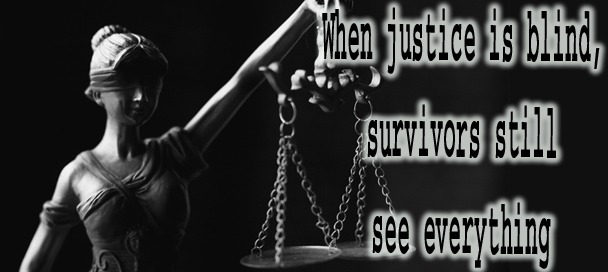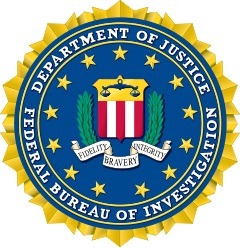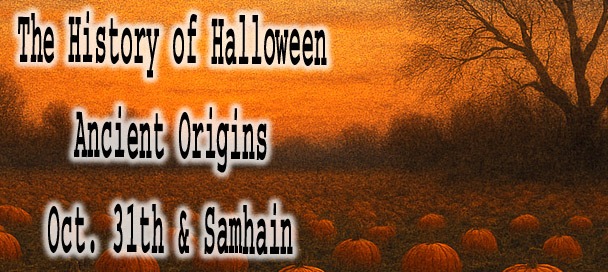🎬 From Courtrooms to Trauma: How Movies About Rape and Justice Challenge Viewers

Lady Justice in stark black and white a haunting symbol for the stories behind movies about rape and justice.
From courtrooms to revenge arcs, cinema has long grappled with rape and justice these 13 films refuse to look away.
From searing dramas to harrowing documentaries, cinema has never shied away from confronting the realities explored in movies about rape and justice. Whether drawn from real court cases or imagined narratives, these films challenge viewers to face injustice, trauma, and the uneasy pursuit of accountability. Each title brings its own perspective some offer catharsis, others spark outrage, but all force difficult conversations.
This article examines 13 powerful movies about rape and justice, trauma, and the quest for justice in bold, unflinching ways. It ranges from court dramas like The Accused to psychological narratives like Irreversible and Promising Young Woman, each challenging how film frames power, guilt, and survival. The piece also highlights male perspectives and real-life legal cases to underscore that cinematic portrayals of assault shape cultural understanding. Ultimately, it argues these films remain essential because they force uncomfortable but necessary conversations about violence, consent, and accountability.
This article examines powerful movies about rape and justice, covering everything from historical cover-ups to modern revenge sagas. With performances that unsettle and stories that refuse to look away, these films don’t just entertain they provoke.
Some are based on real survivors. Others fictionalize the truth to reach a wider audience. But together, these movies about rape and justice reveal how rape is portrayed, how justice is framed, and how society responds on screen and off.
🎥 The 13 Best Movies About Rape and Justice
These 13 unforgettable movies about rape and justice span decades, genres, and perspectives but all share one unflinching goal: confronting what justice really looks like in the aftermath of sexual violence. Some are rooted in courtroom drama, others in emotional fallout or revenge, but each one forces the audience to grapple with uncomfortable truths. Whether drawn from real cases or entirely fictionalized, these films challenge silence, expose broken systems, and ask difficult questions about guilt, blame, and healing.
In The Accused (1988), Jodie Foster shattered taboos as Sarah Tobias, a working-class woman gang-raped in a bar while others watched. Inspired by the 1983 Cheryl Araujo case, the film focused not just on the crime but on society’s response and refusal to believe survivors. Foster won an Academy Award for the role, and the courtroom drama remains a touchstone in discussions of victim-blaming and legal accountability in rape cases.
To Kill a Mockingbird (1962) is more than a coming-of-age story it’s a powerful exploration of racial injustice tied to a false rape accusation. Gregory Peck’s turn as lawyer Atticus Finch helped cement the film’s legacy, but it's the haunting courtroom scenes and the portrayal of Tom Robinson’s fate that still resonate. Though fictional, its depiction of systemic bias mirrors real-life struggles faced by Black men falsely accused.
In Promising Young Woman (2020), Carey Mulligan’s performance as Cassie takes the rape-revenge formula in a new direction. Her quiet war against predatory men unfolds with biting wit and shocking turns. Written and directed by Emerald Fennell, the film polarized critics but made it one of the most talked-about movies about rape and justice of the decade.
The Nightingale (2018) doesn’t hold back. Set in 1825 Tasmania, it follows Clare, an Irish convict, who is raped and left for dead. What begins as a period drama becomes a relentless quest for justice. Aisling Franciosi’s raw performance and Jennifer Kent’s brutal direction turned this historical revenge story into a feminist outcry.
The Girl with the Dragon Tattoo (2011) – Rooney Mara plays Lisbeth Salander, a brilliant but traumatized hacker who survives brutal sexual abuse and later turns the tables in shocking fashion. With its stark visuals and cold Nordic tone, the film merges mystery with vengeance. As one of the most internationally recognized movies about rape and justice, it sparked debate over victim empowerment, consent, and the ethics of violent retaliation.
Precious (2009) introduced audiences to Claireece “Precious” Jones, a teenager facing unspeakable abuse. While fictional, it draws on the harsh realities faced by many. Gabourey Sidibe’s performance stunned critics, and Mo’Nique won an Oscar as her monstrous mother. The film’s raw emotional core helped spark nationwide conversations about cycles of trauma.
In Irreversible (2002), director Gaspar Noé presents a graphic, reverse-chronological nightmare. Monica Bellucci’s character is raped in a long, unbroken take that left audiences shaken. The film's structure forces viewers to see the aftermath before the act, challenging ideas of justice and revenge in deeply unsettling ways.
The Tale (2018), written and directed by Jennifer Fox, is based on her own experience of childhood sexual abuse. Laura Dern plays the adult Fox, who slowly uncovers buried memories while confronting her past. The HBO film is quiet but devastating, praised for its psychological depth and refusal to simplify the truth.
Hard Candy (2005) – In this taut psychological thriller, a teenage girl traps and torments a suspected predator in a twisted battle of wills. Ellen Page (now Elliot Page) delivers a fearless performance that flips the predator-prey dynamic. As one of the most divisive movies about rape and justice of its time, it forces viewers to question morality, revenge, and the limits of vigilante justice.
The Color Purple (1985) brings Alice Walker’s novel to life, including Celie’s years of abuse, both physical and sexual. Whoopi Goldberg’s breakout role and Oprah Winfrey’s fierce support character helped shape the film’s emotional power. It remains a painful but important depiction of generational trauma and resilience.
Elle (2016) – Isabelle Huppert stars as Michèle, a businesswoman who is raped in her home and quietly plots to unmask and confront her attacker. Blending psychological thriller with dark satire, the film defies conventional narratives. Huppert’s Oscar-nominated performance is cold, controlled, and unforgettable. One of the most unconventional movies about rape and justice, it leaves viewers questioning everything about power, consent, and revenge.
In Mysterious Skin (2004), two boys cope differently with being molested by their baseball coach one by repression, the other through self-destruction. Joseph Gordon-Levitt’s fearless performance earned praise, and the film delicately balances horror with heartbreaking truth. It’s one of the most quietly devastating entries in this genre.
Finally, The Kite Runner (2007) adapts Khaled Hosseini’s novel, where childhood rape and betrayal haunt two boys into adulthood. The film’s emotional pull comes not from violence but from silence the long journey to redemption after unspeakable harm. Set against the backdrop of war-torn Afghanistan, it’s a rare portrayal of male victimhood and cultural shame.
Explore the Biographies of Iconic Celebrities
🎞️ Real Women, Real Stories: True Cases Behind Movies About Rape and Justice
Long before fictional narratives took center stage, real survivors and legal cases shaped how sexual assault was portrayed on screen. These movies about rape and justice don’t just tell a story they document battles fought in courtrooms, communities, and personal lives. With performances rooted in truth, they reveal the courage, controversy, and consequences that come from confronting rape in real life.
In The Uncondemned (2015), a team of young lawyers and Rwandan survivors made history by prosecuting rape as a war crime for the first time. Set during the aftermath of the 1994 genocide, the documentary captures both the horror of the crimes and the tenacity of those seeking justice. While the legal process is methodical, the human impact is undeniable.
The Hunting Ground (2015) shook universities across America with its unflinching look at campus sexual assault. Built on real interviews and whistleblower accounts, the film exposed institutional cover-ups and helped ignite reforms. Though criticized by some administrators, it’s widely credited with pushing Title IX back into public conversation.
With The Invisible War (2012), director Kirby Dick uncovered systemic sexual assault within the U.S. military. Survivors many of them career service members recounted abuse, retaliation, and indifference. The documentary’s release led to bipartisan outcry and policy changes, including a rare instance of art leading directly to legal reform.
Monster (2003) explores the life of Aileen Wuornos, a sex worker turned serial killer, whose backstory includes repeated sexual assaults. Charlize Theron’s transformation into Wuornos earned her an Oscar, and the film walks a razor-thin line between sympathy and horror.While controversial, it forces viewers to ask what justice looks like for the deeply broken adding yet another complex entry to the canon of movies about rape and justice..
North Country (2005) tells the real-life story of Lois Jenson, a mine worker who became the lead plaintiff in the first class-action sexual harassment case in U.S. history. Charlize Theron plays a fictionalized version, and her portrayal of workplace abuse and legal triumph earned an Oscar nomination. The film blends courtroom tension with personal trauma to great effect, making it one of the most widely recognized movies about rape and justice based on real events.
The Tale (2018) blurs the line between documentary and drama. Jennifer Fox uses her own childhood abuse as the foundation for a deeply personal investigation into memory and manipulation. Laura Dern plays Fox as an adult confronting long-buried trauma, making it one of the most emotionally complex movies about rape and justice ever produced.
In Precious (2009), while the characters are fictional, the story is grounded in very real cycles of generational abuse and systemic neglect. Author Sapphire based her novel Push on countless stories of young girls trapped in poverty, violence, and silence. The film adaptation gave a voice to the voiceless and stirred conversations in schools, homes, and political halls.
Finally, Boys Don’t Cry (1999) tells the story of Brandon Teena, a transgender man raped and murdered in 1993. Hilary Swank’s portrayal won an Academy Award, but it’s the film’s refusal to sanitize the brutality that gives it lasting power. It brought national attention to hate crimes, gender-based violence, and failures in law enforcement issues still echoing today.
🎭 Men of the Night: Fictional Male Perspectives in Movies About Rape and Justice
While movies about rape and justice most often center women, a handful of powerful dramas have tackled the subject from a male perspective. These fictional portrayals are rare, but when done well, they reveal the deep shame, silence, and emotional aftermath faced by male survivors often without the support systems or cultural empathy afforded to women.
In Sleepers (1996), four young boys are sexually assaulted by guards while in a juvenile detention center. Based on the novel by Lorenzo Carcaterra, the film straddles the line between fiction and autobiography. Years later, two of the boys take violent revenge, and the courtroom trial that follows forces all of them to confront the buried trauma in one of the few mainstream movies about rape and justice told from a male perspective.
Mysterious Skin (2004) follows two teenage boys dealing with childhood rape by the same predator. One becomes a hustler, the other represses the memory entirely, believing he was abducted by aliens. Joseph Gordon-Levitt’s fearless performance elevates the story into something haunting and emotionally raw, exploring memory, denial, and survival in ways few films dare.
In The Kite Runner (2007), a boy is raped in a moment that forever alters the course of two lives. Years later, the friend who failed to intervene seeks redemption by rescuing the victim’s son from further abuse. While the film is more about guilt and atonement, the assault is central to its emotional weight and long-lasting psychological impact.
Mystic River (2003) implies sexual abuse during a boy’s brief time in captivity, and the emotional damage manifests years later in disturbing ways. While never explicitly shown, the trauma hangs over every scene, revealing how childhood wounds can fester into violence, mistrust, and broken masculinity.
Finally, Deliverance (1972) shocked mainstream audiences with its graphic male rape scene, where Ned Beatty’s character is assaulted by backwoods captors and forced to "squeal like a pig." The film’s brutal realism and unflinching portrayal of male vulnerability challenged macho ideals in cinema, making it one of the most disturbing and discussed movies about rape and justice involving male victims ever made.
Explore the Biographies of Iconic Celebrities
🎥 Real Men, Real Scandals True Stories Behind Movies About Rape and Justice
While fictional portrayals of male assault are rare, real-life cases shown in movies about rape and justice are even more hidden often buried under stigma, disbelief, or institutional cover-up.. These films shine a harsh light on true cases where men came forward, exposed abuse, and challenged the systems that failed them. Their stories are raw, controversial, and long overdue for recognition.
Deliver Us From Evil (2006) is a devastating documentary centered on Father Oliver O’Grady, a Catholic priest who molested dozens of children mostly boys over decades. Through interviews, court records, and victims’ accounts, the film revealing one of the most disturbing institutional failures shown in movies about rape and justice. It’s a chilling account of institutional silence and systemic betrayal.
Spotlight (2015) dramatizes The Boston Globe’s investigation into widespread sexual abuse within the Catholic Church. While it features a broad ensemble cast, many of the survivors shown or referenced are male. The film won Best Picture at the Oscars and and reaffirmed the role of investigative journalism in shaping movies about rape and justice rooted in fact, accountability, and the power of journalism.
In The Invisible War (2012), while most attention focuses on female military survivors, several men also step forward. Their stories of rape, denial, and retaliation within the U.S. armed forces highlight how toxic masculinity and rigid hierarchies silence male victims even more aggressively. The film’s policy impact extended to protections for all survivors, regardless of gender.
Delhi Crime (2019), though centered on the brutal 2012 gang rape of a woman, includes a subplot involving male victims of assault and institutional corruption. Based on real police files and survivor interviews, the series doesn’t shy away from broader patterns of violence, power, and public outrage that affect all genders.
Together, these films challenge the idea that male survivors are outliers. They prove that movies about rape and justice are not about gender they’re about power, silence, and the courage it takes to break both.
📊 Closing Facts on Rape and Justice in the U.S. and Worldwide
Sexual violence remains one of the most underreported and under-prosecuted crimes across the globe. Despite heightened awareness in recent years, statistics reveal that the gap between reported cases, convictions, and justice served remains staggering both in the United States and internationally.

Official seal of the Federal Bureau of Investigation (FBI), used in reference to national crime statistics.
In the U.S., the FBI redefined rape in 2013 to include “penetration, no matter how slight, of the vagina or anus with any body part or object, or oral penetration by a sex organ of another person, without the consent of the victim.” This updated definition includes attempts but excludes statutory rape and incest. According to 2023 data, the reported rate of forcible rape in the United States stands at 38 per 100,000 people, slightly down from 41.2 in 1990. In 2018 alone, an estimated 139,380 rapes were reported, reflecting a 2.7% increase from the previous year. (Statista, FBI UCR)
Despite these numbers, arrests and convictions remain rare. Of the rapes reported in 2018, only 33.4% led to an arrest. Just 9% of cases resulted in prosecution, and only 3% led to incarceration meaning 97% of rapists avoided jail time. (RAINN) Underreporting continues to be a major hurdle, with only 34.8% of sexual assaults reported to law enforcement. Fear of retaliation, lack of faith in the system, and social stigma remain the primary barriers. (BJS.gov)
Globally, reported rape rates vary widely depending on definitions and legal transparency. Botswana currently holds the highest reported rate with 92.93 incidents per 100,000 people, followed closely by Lesotho and South Africa. In contrast, countries like Sweden report higher rates largely due to broader legal definitions, while nations such as Saudi Arabia report almost none due to strict societal controls and underreporting. (World Population Review)
The broader global picture is just as alarming. UN Women estimates that about 1 in 3 women worldwide will experience sexual violence in their lifetime. Less than 40% seek any form of help, and fewer than 10% ever report the crime to police. (📖 Read: UN Women Facts and Figures) Among children, UNICEF reports that approximately 370 million girls and women (1 in 8), and between 240 to 310 million boys (1 in 11), are sexually assaulted before the age of 18. (UNICEF)
In the UK, delays in the justice system remain a growing concern. As of March 2022, over 11,000 sexual offense cases were pending, and the average rape trial took nearly two years to begin. (Rape Crisis UK) Worldwide, underreporting remains a constant obstacle. It's estimated that up to 90% of rapes go unreported, particularly in regions where victims risk punishment for coming forward, such as Afghanistan. (UN Women)
These numbers don’t just illustrate a crisis they underscore why conversations around justice, representation, and accountability in media matter. Films that address these issues help break silence, raise awareness, and push for change in ways statistics alone never could, an ongoing reality reflected in global movies about rape and justice.
🎬 Final Reflection: Why Movies About Rape and Justice Still Matter
After decades of evolving depictions, movies about rape and justice continue to play a critical role in shaping public awareness and discourse. These aren’t just dramatic plot devices or shock-value moments they are reflections of real pain, real injustice, and the systemic failures that continue to plague survivors around the world. From courtrooms to college campuses, war zones to small towns, these films offer more than just storytelling they demand attention.
The best movies about rape and justice challenge viewers to think deeper about consent, credibility, and what justice really looks like. They amplify voices often silenced by stigma and fear, giving weight to stories the news cycle may forget. And while no film can solve the problem, many have pushed lawmakers, institutions, and entire generations to re-examine their assumptions.
As long as survivors are still fighting to be heard, these films will remain vital not because they’re entertaining, but because they’re necessary. The conversation is far from over, and the role of movies about rape and justice in that conversation remains as powerful as ever.

ML Lamp is the owner of Kilroy Was Here. After his 20 years of working in Las Vegas in the entertainment promotions field, Mr. Lamp retired in 2002 from his job to pursue his passion for collectibles. Now as a guest speaker and author he’s living the dream, and sharing his warmth with You.





